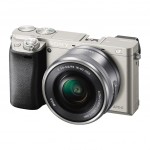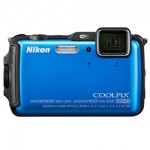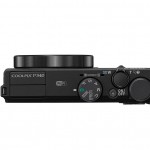As extracted from:
http://news.independent.co.uk/world...sp?story=513486
21 April 2004
Are we putting too much faith in the ubiquitous "recordable CD", or CD-R? It is undeniably one of the most useful means of storage around, offering an inexpensive way to save digital photographs, music and files and costing less than 50 pence per disc.
If you check the claims made by some manufacturers of popular CD-R brands, you will see that some make bold claims indeed. Typical boasts include: "100-years archival life", "guaranteed archival lifespan of more than 100 years" and "one million read cycles". One company even says data can be stored "swiftly and permanently", leaving you free to bequeath those backups of your letter to the electricity company to your great-great-grandchildren.
But an investigation by a Dutch personal computer magazine, PC Active, has shown that some CD-Rs are unreadable in as little as two years, because the dyes in the CD's recording layer fade. These dyes replace the aluminium "pits" of a music CD or CD-Rom, and the laser uses that layer to distinguish 0s from 1s. When the CD is written, the writing laser "burns" the dye, which becomes dark, to represent a "1" while a "0" will be left blank so that if the dye fades, there's no difference; it's just a long string of nothing to the playback laser.
So have you already lost those irreplaceable pictures you committed to the silver disc? PC Active suggests we should forget CD-Rs as a durable medium, after its own testing found some with unreadable data after just two years. "Though they looked fine from the outside, they turned out to be completely useless," wrote the technical editor Jeroen Horlings, who had tested 30 brands in 2001, left them in a dark cupboard for two years and then re-tested them in August 2003. Of the brands tested, 10 per cent showed ageing problems. And it wasn't just Horlings. After seeing the results, shocked readers contacted the magazine with their experiences.
Recordable DVDs are not off the hook either. The "dye chemicals" in write-once DVDs are similar to CD-R, though recording density and disk construction differ. "We're in the process of testing DVDs and we're sure that the same problems will occur," said Horlings, who plans to publish his findings soon.
Gordon Stevenson, the managing director of Vogon International - a company specialising in data recovery - is familiar with these shortcomings thanks to the experiences of his customers, one of whom commissioned Vogon to retrieve pictures of his second honeymoon from a failed six-month-old CD-R. "The dye layer was fading," Stevenson says, "but we were able to recover most of the disk. But these claims [of a 100-year archival life] are unhelpful and misleading. If you're spending 20p on something, you probably don't expect it to last 100 years," he says.
In the wrong conditions, such as sunlight, humidity and upper surface damage, your CD-R will slowly turn into a coaster. "CD-Rs should never be left lying in sunlight as there's an element of light sensitivity, certainly in the poor quality media," says Stevenson. "I wouldn't rely on CD-Rs for long-term storage unless you're prepared to deal with them as recommended."
Such views are echoed by the National Archives at Kew. "Generally speaking, we don't recommend CD-Rs for long-term storage," says Jeffrey Darlington, a project manager at the Archives' Digital Preservation Department. "We don't regard CD-Rs as an archival medium. Most of the CD-Rs on the market are not of archival quality." Instead of CD-Rs, therefore, the National Archives tend to use magnetic tape rated for a 30-year life. Also, they are careful to copy, check and re-copy to avoid losing information and this is also a useful strategy for CD-Rs. "If you keep doing that so the CD-R is never more than physically three to five years old, you'll be safe enough. A hundred years sounds pretty unlikely," says Darlington.
Not all optical media is vulnerable. The rewritable variants (RW) use metallic materials that change the phase of the light, rather than light-sensitive dyes. Commercial magneto-optical and ultra-density optical systems are different too. Stewart Vane-Tempest, the optical product director at Plasmon, the archival specialists, has first-hand experience of unreadable CD-R media. "Some dyes are very robust, but others not," Vane-Tempest says. "The one thing they have in common is susceptibility to environmental conditions. I do a lot of digital photography and pay top price for media. If I have anything important, I generally make a couple of copies. I've not used CD-Rs for long-term archiving."
Vane-Tempest also offers a tip. Blank CD-R disks have a code that your CD writer reads to find the best writing strategy. If this isn't in the CD-writer's inbuilt software (its "firmware"), the default may be a poor compromise. Vane-Tempest says that some "less scrupulous" Far East companies have been using other people's codes, with deficient results. However, there is a way around this which is to find out which brands suit your writer and ensure the firmware is up to date.
While such matchmaking is useful, there's no way to assess CD-R longevity at home. All you can do is check periodically. As for whether manufacturers are guilty of using finger-in-the-air methods, Kevin Jefcoate, the marketing and product management director at Verbatim, says: "It's a bit more than guesswork because there's a lot of scientific evidence to back it up."
The answer, Jefcoate says, is to use a climate chamber to accelerate the ageing of the organic dye. Using a relationship between chemical reaction rate and temperature, 100-year lifetimes may be argued for normal conditions. Jefcoate adds that he has never known users to complain of age-related failures? "We haven't had anyone complain that, after three to five years, it hasn't worked." It's easy to blame budget CD-Rs when things go wrong. Novatech's purchasing and product manager, Kriss Pomroy, suggests users buy a small quantity for testing first.
The PC builder sells unbranded CD-Rs sourced from a Far East distributor that buys over-production from well-known factories. Are we saving pennies and taking risks? "No," says Pomroy, "You can get problematic batches, but that's as true with branded media." The company now sells two-and-a-half times more unbranded write-once DVDs than CD-Rs.
The world's No 1 supplier of CD-Rs, Imation, talks of "saving precious digital photo memories" - exactly what many people think they're doing. Semar Majid, its technical marketing executive, hasn't heard of any ageing problems. "Optical media should last between 30 and 200 years," he says, "but it's dependent on storage conditions and how you handle it." He suggests transferring important photos to DVD, and keeping on moving to new formats.
Another big maker, TDK, takes a cautious view with DVDs, claiming only a 70-year lifespan. "This does not mean that DVD is more fragile or unstable in time compared to CD-R; this is only because of the shorter experience that we have in manufacturing and testing this relatively young technology," says the TDK product manager Hartmut Kulessa. There have been no complaints about ageing failures.
As the oldest CD-R is barely a teenager, there are no definitive answers either. But perhaps the last word belongs to Jeroen Horlings at PC Active. "We see a lot of manufacturers and they think that quantity is more important than quality," he says. "The problem will remain."
For more info on CD-Rs and dyes: www.burnworld.com/cdr/primer/whatis.htm; www.xdr2.com/CDR-Info/Dye.htm





 LinkBack URL
LinkBack URL About LinkBacks
About LinkBacks

 Reply With Quote
Reply With Quote








